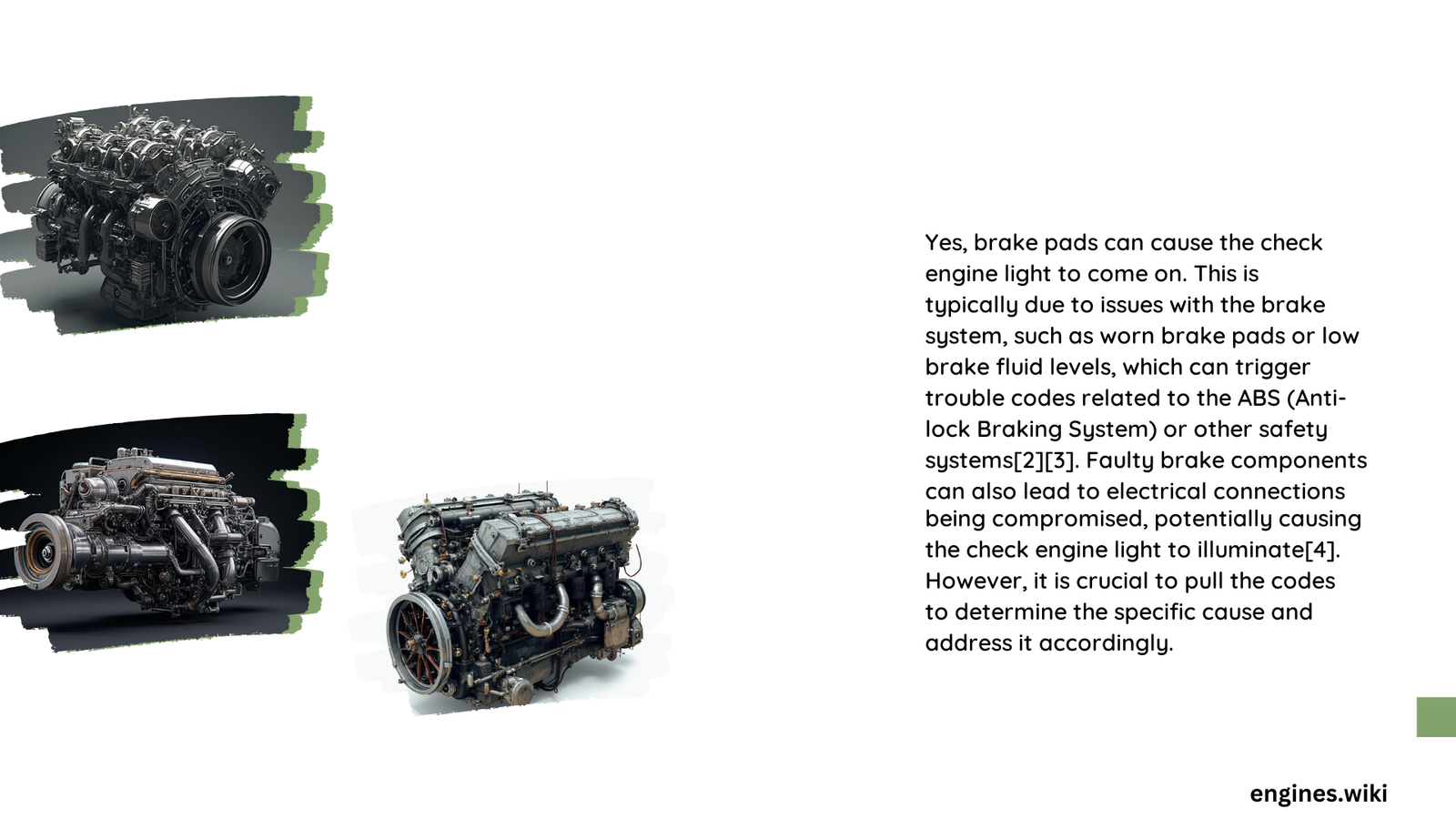Modern vehicles have intricate electronic systems where brake components can indirectly influence check engine light activation. While brake pads themselves rarely directly trigger the check engine light, complex interactions between brake system sensors, ABS modules, and vehicle computer systems can potentially cause unexpected warning light illumination. Understanding these nuanced connections requires comprehensive diagnostic knowledge about vehicle electrical and mechanical interdependencies.
What Triggers Check Engine Light in Brake Systems?
Can Brake Pad Wear Directly Activate Check Engine Light?
Brake pad wear typically does not directly cause check engine light activation. However, several interconnected scenarios might indirectly trigger the warning:
- Sensor Malfunction Scenarios
- Faulty brake pad wear sensors
- Electrical connection problems
-
Integrated system diagnostic errors
-
Hydraulic System Complications
- Low brake fluid levels
- Air in brake lines
- Compromised hydraulic pressure
How Do ABS Systems Influence Check Engine Light?
The Anti-lock Braking System (ABS) plays a crucial role in potential check engine light activation:
| ABS Component | Potential Check Engine Light Trigger | Diagnostic Complexity |
|---|---|---|
| Wheel Speed Sensors | High | Moderate |
| Hydraulic Pump | Medium | Complex |
| Electronic Control Module | Very High | Advanced |
What Electrical Interactions Occur Between Brake Systems and Engine Diagnostics?
Modern vehicles integrate multiple electronic systems, creating potential cross-communication scenarios:
- Integrated Diagnostic Protocols
- OBD-II system monitors multiple vehicle subsystems
- Brake system sensors communicate with central computer
- Unexpected electrical signals can trigger warning lights
Can Brake Pad Replacement Cause Check Engine Light?
Brake pad replacement might indirectly cause check engine light activation through:
- Battery disconnection during repair
- Unintended electrical system disruption
- Improper sensor reconnection
- Calibration requirement after maintenance
What Professional Diagnostic Steps Resolve Brake-Related Check Engine Light?
Recommended diagnostic approach:
- Use professional OBD-II scanner
- Read specific diagnostic trouble codes (DTCs)
- Inspect brake system electrical connections
- Check ABS module functionality
- Verify sensor integrity
- Perform comprehensive system reset
Critical Maintenance Recommendations

- Regular Brake System Inspection
- Check brake fluid levels quarterly
- Inspect brake pad wear sensors annually
-
Monitor ABS system performance
-
Electrical System Maintenance
- Ensure proper sensor connections
- Use quality electrical contact cleaners
- Replace worn wiring harnesses
When Should You Seek Professional Help?
Immediate professional consultation is recommended if:
– Multiple warning lights appear simultaneously
– Persistent check engine light after brake maintenance
– Unusual brake system behavior
– Unexplained electrical system warnings
Technical Insights
Brake pad sensors operate on precise electrical resistance principles. When pad thickness reaches a critical point, sensor resistance changes, potentially triggering warning mechanisms. However, modern vehicles have sophisticated diagnostic systems that prevent unnecessary warning light activations.
Conclusion
While brake pads rarely directly cause check engine light activation, complex vehicle systems create potential interaction scenarios. Professional diagnostic approaches and comprehensive system understanding remain crucial for accurate troubleshooting.
